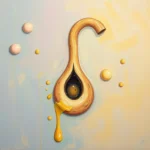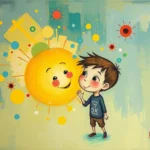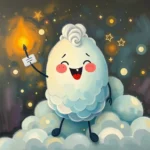
Introduction
Dreams have captivated humanity since ancient times, serving as a bridge between our conscious thoughts and the unconscious mind. The history of dream symbolism is rich and varied, often reflecting the cultural, spiritual, and psychological landscapes of different eras. As we delve into the symbolism and meaning of dreams, we uncover why they intrigue people so profoundly. Dreams can mirror our fears, desires, and unresolved issues, inviting us to explore the depths of our psyche. This article will explore the history of dream symbols, their meanings, and how they can connect to our everyday lives.
Symbolism and Meaning
Decoding the symbols present in our dreams can lead to deeper insights about our lives. Here are some common symbols and their interpretations, along with various perspectives to consider:
- Water: Often symbolizes emotions and the unconscious.
- Calm water may indicate peace and tranquility.
-
Rough waters might suggest chaos or emotional turbulence.
-
Flying: Represents freedom and a desire to escape.
- A feeling of weightlessness can indicate a sense of liberation.
-
Struggling to fly may reflect feelings of inadequacy or fear of failure.
-
Death: Not necessarily a negative symbol; it can signify transformation or change.
- The death of a loved one can indicate a significant change in one’s life or the end of a phase.
-
Your own death may symbolize the need to let go of past behaviors or beliefs.
-
Animals: Often reflect instincts or primal urges.
- A snake can symbolize transformation but may also reflect hidden fears.
-
A bird often represents freedom, but the type of bird can alter its meaning (e.g., a crow might symbolize death or mystery).
-
Chase: Often a reflection of avoidance or fear.
- Being chased can signify running away from responsibilities or problems.
-
The identity of the pursuer can provide clues about what you might be avoiding.
-
Nudity: Represents vulnerability or a fear of exposure.
- Feeling exposed may indicate concerns about how others perceive you.
- Alternatively, it can signify a desire for authenticity and freedom from societal norms.
These interpretations can vary based on individual experiences and cultural backgrounds. As you reflect upon your dreams, consider how your own life experiences and emotions shape these symbols’ meanings.
Key Scenarios and Variations
Dreams can manifest in countless scenarios, each adding layers of interpretation. Understanding these variations can help you decipher your dreams more effectively. Here are some scenarios that may alter the interpretation of common symbols:
- Recurring Dreams: If you experience the same dream multiple times, it may signify unresolved issues or a lesson that needs to be learned.
-
For instance, a recurring theme of being chased could indicate persistent anxiety in your waking life that requires attention.
-
Lucid Dreams: In these dreams, you become aware that you are dreaming and may even control the dream narrative.
-
The ability to manipulate the dream can symbolize empowerment and the ability to confront fears directly.
-
Nightmares: These can be particularly distressing and often reflect deeper psychological issues.
-
A nightmare involving flying may suggest a fear of failure, while one about death can evoke anxiety about life changes.
-
Daydreams: Often a more positive experience, daydreams can reflect your hopes and aspirations.
-
A daydream about traveling may symbolize a desire for adventure or personal growth.
-
Dreams of the Future: Sometimes, dreams can offer glimpses into potential futures or outcomes based on current life paths.
-
A dream where you achieve a goal can motivate you to pursue your ambitions actively.
-
Symbol Combinations: The meaning can shift considerably when symbols appear together.
- For example, dreaming of water and flying might combine the themes of emotional release and freedom, suggesting a need to embrace your emotions to experience liberation.
Reflecting on these variations can provide a broader understanding of your dreams and what they may signify in your life.
Real-Life Connections and Takeaways
Connecting your dreams to real-life situations can enhance your self-awareness and personal growth. Here are some insights and practical advice for self-reflection:
-
Journaling: Keep a dream journal to document your dreams and the emotions associated with them. Over time, patterns may emerge that reveal insights about your waking life.
-
Emotional Check-Ins: After experiencing a significant dream, take a moment to assess your feelings. Are there aspects of your life that resonate with the dream’s themes?
-
Example: If you dream of turbulent water, consider whether you feel overwhelmed or stressed in your daily life.
-
Symbol Exploration: Choose one symbol from a recent dream and explore its meaning in your life. Ask yourself:
- What does this symbol represent to me personally?
-
How does this symbol connect with my current experiences or feelings?
-
Mindfulness Practices: Engage in mindfulness or meditation to better understand your emotions and thought patterns. This practice can help you become more attuned to your subconscious, allowing for deeper insight into your dreams.
-
Seek Feedback: Discuss your dreams with trusted friends or a therapist. Sometimes, an outside perspective can reveal blind spots or provide new interpretations.
-
Create Action Steps: If a dream highlights an area of concern or desire, consider creating actionable steps to address it.
-
For instance, if you dream of flying but feel a sense of fear, you might explore activities that foster a sense of freedom, such as travel or creative expression.
-
Personal Reflection: Take time to reflect on how the themes in your dreams align with your values, goals, and challenges. Consider writing down your reflections and revisiting them periodically.
Incorporating these practices into your routine can help you connect your dreams to your waking life, fostering personal growth and emotional understanding.
As you navigate the fascinating world of dreams and their symbols, remember that the interpretations are deeply personal. Each dream serves as a mirror, reflecting your innermost thoughts, feelings, and experiences. By engaging with your dreams thoughtfully and reflectively, you can unlock profound insights into your life, leading to greater self-awareness and emotional well-being. Embrace your dreams, and let them guide you on your journey of self-discovery.







